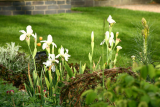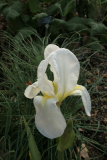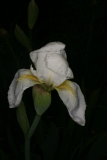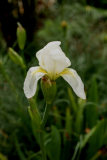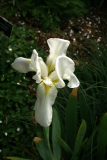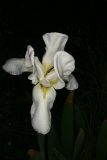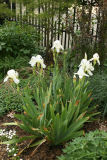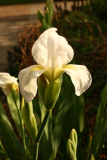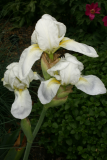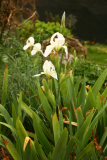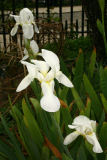Additional notes (click to expand)
Medicinal
Culpeper: “They ... resist poison, help shortness of the breath, provoke the terms; the root being green and bruised takes away blackness and blewness of a stroke [viz: the discolouration of a bruise], being applied thereto.”
Culpeper, Nicholas. (1650). A Physical Directory . London, Peter Cole.
Nomenclature
Iris x germanica 'Florentina is the correct/full name for this cultivar of this natural hybrid
This is now changed (2021) and it is now regarded as a species Iris florentina L. and not a natural hybrid http://powo.science.kew.org/
http://powo.science.kew.org/
Other use
The roots are dried and ground up to make Orris powder. This has a fragrance of violets, improving with age, and is used as a basis for perfumes and as a food flavouring. In herbal medicine it is used to treat diarrhoea, chest complaints, and as a diuretic, but it is potentially toxic
Oakeley, Dr. H. F. (2013). The Gardens of the Pharmacopoeia Londinensis.
Notes by Henry Oakeley from Lindley's 'Flora Medica' (1838): This plant used to be known as Iris florentina and is an alba form of Iris germanica. The ground up rhizome is the source of Orris root/Orris powder, used in perfumery and for flavouring food. Lindley notes that it was ‘a subacrid, aromatic rather bitter substance employed in the manufacture of toothpowder and hair powder’.
Lindley, John. (1838). Flora Medica, Longman, Orme, Brown, Green & Longmans
Toxicity
Deer apparently do not eat it. It can cause contact dermatitis. The roots produce a black dye, the flowers a blue dye. Orris oil can cause a contact dermatitis.
Oakeley, Dr. H. F. (2013). The Gardens of the Pharmacopoeia Londinensis.
Iris germanica 'Florentina'
Family: IRIDACEAEGenus: Iris
Species: germanica
Cultivar: 'Florentina'
Pharmacopoeia Londinensis name: Iris Florentina
Garden status: Not currently grown

